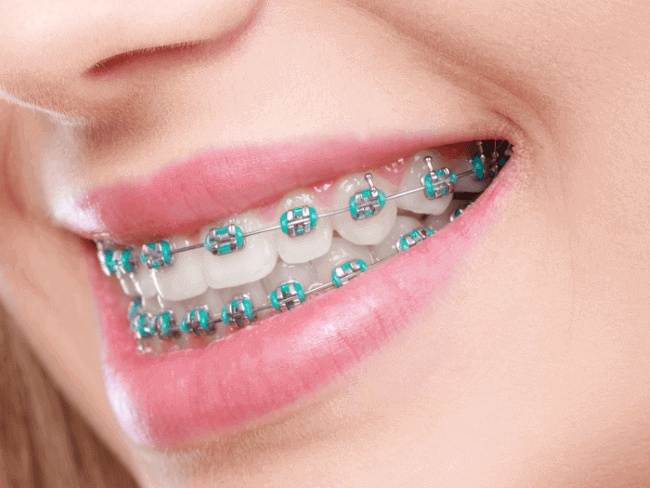If you're looking for an alternative to braces, there are many options available. Some of these options include Invisalign, Clarity, and eCligners. Dental technology is an exciting field, and advances are constantly being made. The time after having braces can be a little painful or more that is why the technology is on it to minimize the after effects. Read on to learn more about some of the latest advancements in dental care.
Invisalign
Invisalign dental braces technology involves wearing a series of plastic aligners that move teeth gradually. Patients typically wear these aligners for about two weeks at a time. Each set of aligners is custom-made for the individual patient. The treatment time depends on the severity of the malocclusion, the number of teeth that need to be moved, and the complexity of the case.
Traditional removable appliances have been used for years, but the advances in computer technology have made the process more effective for a wider range of cases. Today, there are 20,000 general dentists certified by Align Technologies to use the aligners.
Incognito
The Incognito dental braces technology is the latest advancement in orthodontic technology. Unlike traditional metal braces, which are usually visible, Incognito braces are virtually invisible from the front. They are made with precision and curved wires that mimic the shape of your teeth. This allows them to correct complicated problems, including crowding, rotations, and bite discrepancies. Incognito braces are also made with high-quality brackets that minimize speech interference.
The Incognito dental braces process begins with an impression of your teeth, which Dr. Emma will send to the Incognito Lab for fabrication. This laboratory uses robotic technology to manufacture brackets and wires specifically designed for your teeth. The entire process takes about six weeks, after which the brackets and wires are cemented on your teeth.
Clarity
Clarity of dental braces technology offers many benefits over traditional metal braces. For one, it can be very comfortable to wear. The clear brackets also blend in with the color of the teeth, so you don't have to worry about staining your teeth during treatment. There are also a variety of design options, including tooth-colored wires.
Clarity is manufactured by 3M, a large company that uses science and technology to make advances in many fields, including dentistry. Clarity brackets are made of ceramic, and they are low-profile to minimize bulk. Because of this, they are also more comfortable to wear, and the wires are hidden from view. In addition to being smaller than competitors, the brackets are also stronger.
eCligners
eCligners for dental brace technology is made of biocompatible materials that are non-irritating and do not cause any harm to the patient's teeth. This technology works on a simple principle and is easy to understand. The developers of this system worked hard to come up with a system that would work without using metal appliances. Moreover, the system needed to look aesthetically pleasing.
The technology used in eCligners is designed to improve tooth movement and prevent tooth movement. This process uses software to determine the exact movements that need to be made on the teeth. The software also determines the mechanical principles that must be applied to the aligner to achieve the desired movement. In addition, the aligner has pressure points and power ridges that can help in changing the shape of the tooth.
Self-ligating braces
Self-ligating dental braces technology is one of the latest innovations in orthodontics. It eliminates the need for metal and elastic ties and can help you move teeth more quickly and comfortably. It also helps improve facial aesthetics. Traditional braces tie teeth in place with elastics, which causes friction and pressure and can be uncomfortable. Self-ligating braces use a slide mechanism to hold the wire and allow the teeth to move as they should.
Another benefit of self-ligating brackets is the fact that they are much easier to maintain. The elastic bands that tie the brackets are more difficult to clean and tend to increase bacterial concentrations. The special clips on the brackets of self-ligating braces make it possible for the teeth to move more easily, eliminating the need for elastic bands. Moreover, self-ligating brackets require only minor adjustments to advance treatment. This means that patients will spend less time and are less uncomfortable during their appointments.
Robotic wire-bending
In a dental braces procedure, a wire is inserted to close the gap between teeth. The wire also serves as a guide for the brackets to slide along. For the wire to move smoothly, it must be bent into a smooth curve. For this purpose, the wire is divided into small sections, each containing several small bends. These bends are connected together to create the desired smooth curve.
In the process, the robot is equipped with a force sensor system to detect the wire after it has been bent. It then makes additional bends according to the detected forces. When the force sensor registers zero, the wire is considered to be bent properly.
CAD/CAM technology
CAD/CAM technology in dentistry uses digital methods like scanning, 3D printing, and software to create physical instances based on 3D models. It is not limited to the dental industry, and professionals from a variety of fields use it. It helps experts create more accurate representations of designs and make virtual changes on the fly. It has been a boon for many industries, but is largely underutilized in the dental field.
CAD/CAM technology for dental braces can provide faster and more convenient results than traditional lab methods. The process can be completed in 45 minutes to two hours, depending on the complexity of the case. Traditional laboratory methods require the patient to visit the dentist and submit a mold of the teeth to a lab for fabrication. The CAD/CAM process allows the dentist to complete all of these steps in one appointment. We;;, is this sufficient for what you are looking for or want to know more? Check this blog.


No comments yet